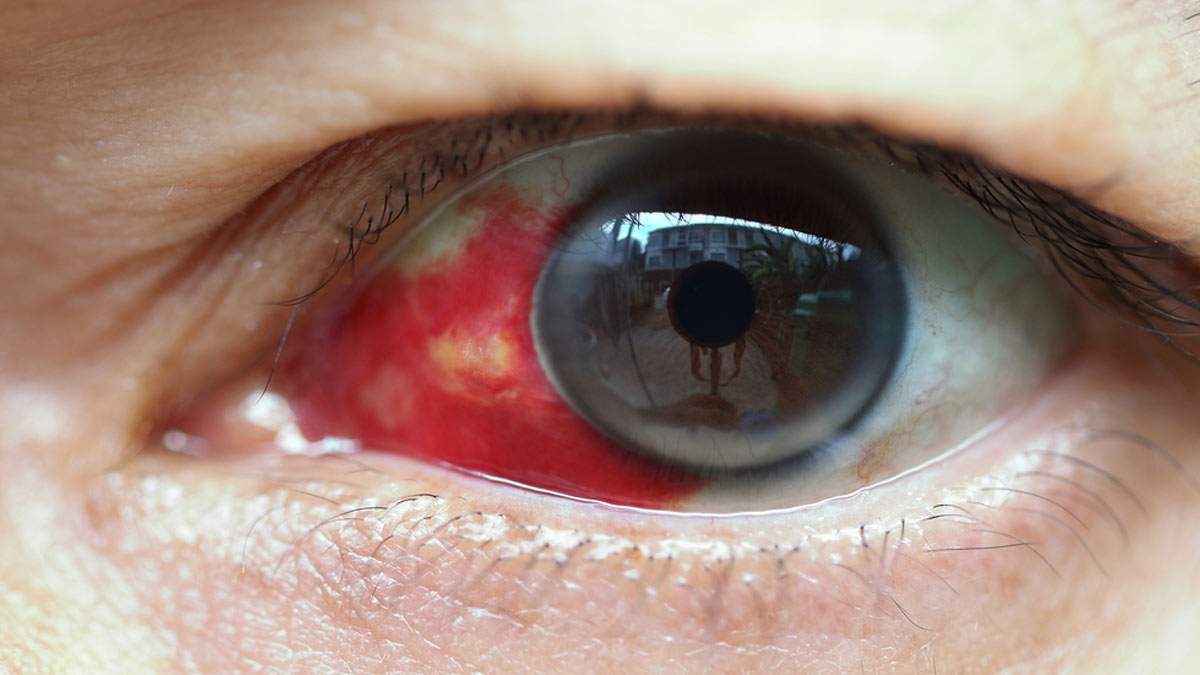
Crimean-Congo Haemorrhagic Fever (CCHF) sounds nothing short of a tongue twister. This viral fever is just as complicated as it sounds and was recently in the news for causing deadly outbreaks in the UK, Namibia, and Afghanistan.
Table of Content:-
The World Health Organisation informed that the CCHF virus causes severe haemorrhagic fever outbreaks, one distressing symptom of which is bleeding from the eyes, and has a case fatality rate of 10–40%. To know more about this curious disease, the team of OnlyMyHealth reached out to Dr Ranga Santosh Kumar, Consultant General Physician & Diabetologist, Yashoda Hospitals, Hyderabad.
Understanding Crimean Congo Haemorrhagic Fever

Providing insight into this eye bleeding disorder, Dr Kumar said, “CCHF is a widespread disease caused by a tick-borne virus (Nairovirus), and has caused endemics in Africa, Europe, the Balkans, the Middle East and Asian countries. This virus spreads through a wide range of hosts including wild and domestic animals such as cattle, sheep and goats.”
“The CCHF virus is transmitted to people either through tick bites, human transmission, or through contact with infected animal blood or tissues during and immediately after slaughter,” he added.
Also Read: Viral Versus Bacterial Infection: Why You Need To Know The Difference
Symptoms Of Crimean Congo Haemorrhagic Fever
The symptoms of CCHF act fast and typically appear within one to three days after infection, and can range from mild to severe. For your benefit, Dr Kumar listed a set of symptoms that you must be aware of in order to seek timely treatment if you notice these symptoms in you or those around you:
- Fever
- Nausea, vomiting, and diarrhoea
- Muscle aches including neck pain, stiffness, and backache
- Headache and dizziness
- Sore eyes
- Photophobia or sensitivity to light
- Abdominal pain
- Mood swings and confusion
As the disease progresses, more severe symptoms emerge. “After two to four days, the agitation may be replaced by sleepiness, depression and lassitude, and the abdominal pain may localise to the upper right with liver enlargement,” informed Dr Kumar. At this point, CCHF presents the following deterrents:
- Jaundice
- Bleeding, both internal and external (including nosebleeds, gum bleeding, and bleeding through the eyes)
- Bruising
- Kidney failure
- Liver damage
- Shock
- Coma
“Other clinical signs include fast heart rate, enlarged lymph nodes, and a rash caused by bleeding into the skin, in the mouth and throat. This is a sign of severe haemorrhage happening in the body. Severely ill patients may also experience rapid kidney deterioration, sudden liver failure or pulmonary failure after the fifth day of illness,” concluded Dr Kumar.
Crimean Congo Haemorrhagic Fever Prevention And Treatment

As always, prevention is better than cure. “If you are living in, or visiting any of the areas where CCFD is endemic, wear protective and light-coloured clothing to allow easy detection of ticks on your clothes,” advised Dr Kumar. Some other ways in which you can enhance your efforts to avoid CCHF are:
- Avoid Ticks: Wear protective clothing when in tick-prone areas, use tick repellents, and perform regular tick checks.
- Practice Good Hygiene: Frequent handwashing is crucial, especially if you are in close contact with livestock or an infected person.
- Safe Handling: If you are a healthcare worker, or work in close proximity with healthcare workers, take proper precautions when handling patients' blood or bodily fluids.
- Quarantine Measures: Isolate yourself from individuals suspected of having CCHF to prevent further transmission.
Also Read: Viral Fever, Dengue, COVID, Flu and More, Same Symptoms Making Diagnosis Difficult
Treating Crimean Congo Haemorrhagic Fever
Before doctors can impart treatment to a suspected CCHF patient, they have to properly diagnose them first. But, diagnosing CCHF can be challenging due to its similarity to other illnesses like Ebola or severe cases of the flu. Typically, healthcare providers perform blood tests, including polymerase chain reaction (PCR) tests to detect whether the patient is a confirmed case of CCHF.
- Currently, there is no specific antiviral treatment for CCHF. Supportive care is the primary approach, which includes:
- Fluid and electrolyte management to address dehydration and electrolyte imbalances.
- Pain and fever management through medications.
- In cases of severe bleeding, blood transfusions are given to the patients.
- Patients have to be isolated to prevent the spread of the virus.
When we talk about infectious diseases, Crimean-Congo Hemorrhagic Fever stands as a formidable adversary. This viral illness, known for its high fatality rate, unfortunately, has no specific antiviral treatment yet. Hence, awareness, prevention, and prompt medical attention can be your only tools to manage the spread of this deadly virus. If you reside in or plan to travel to endemic areas, taking precautions and staying informed about CCHF can helpyou and those around you to be safe from this devastating disease.
Cited Article: Crimean-Congo haemorrhagic fever
Also watch this video
Read Next
Sitting For Over 10 Hours A Day May 'Significantly' Increase Your Risk Of Dementia, New Study Finds
How we keep this article up to date:
We work with experts and keep a close eye on the latest in health and wellness. Whenever there is a new research or helpful information, we update our articles with accurate and useful advice.
Current Version